For someone like me who grew up in Japan, kitsune udon has always stood out as the ultimate comfort, surpassing beef niku udon, curry udon, or chilled zaru udon in quiet satisfaction.
But what makes this bowl so special isn’t obvious. Let’s explore the authentic recipe together.
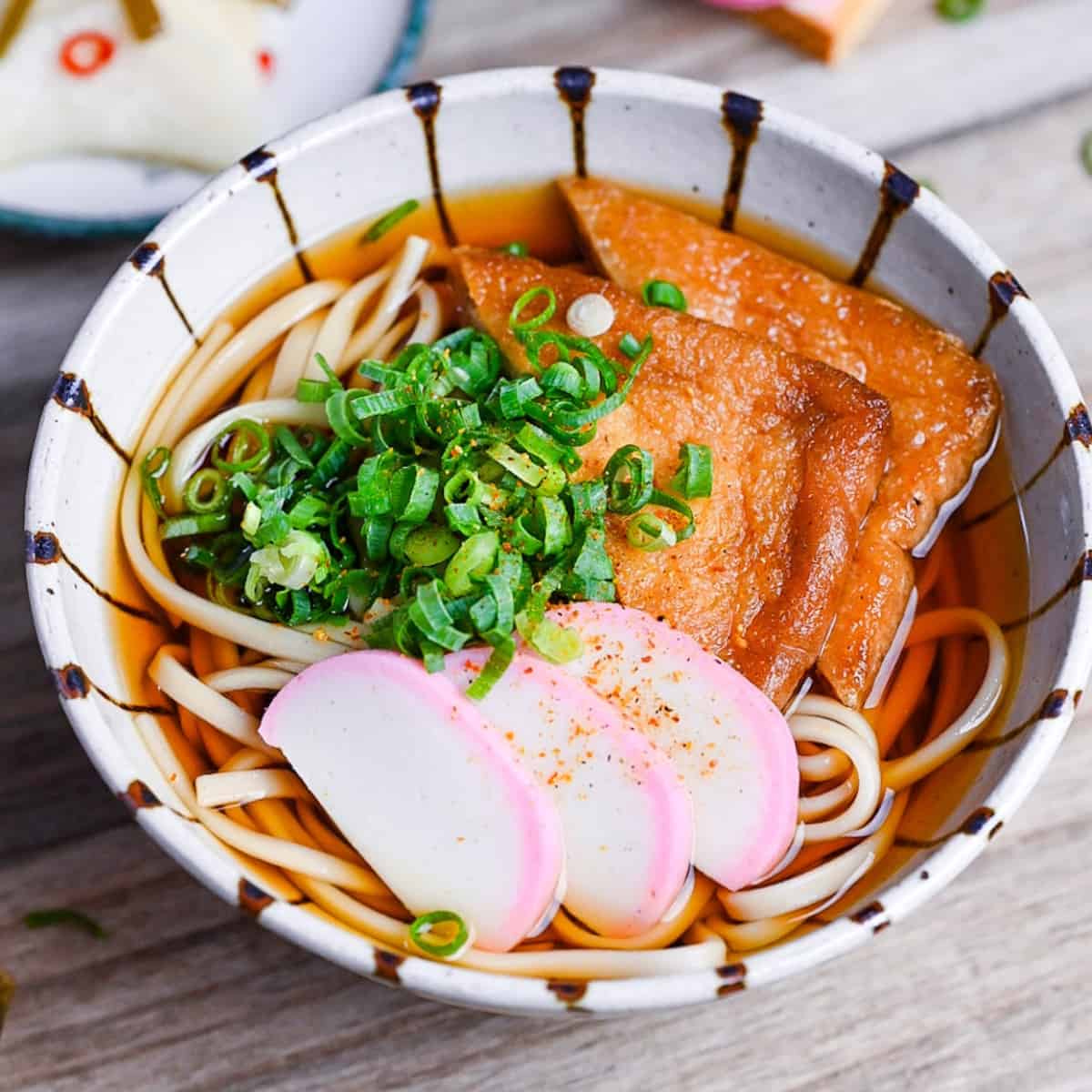
Shiso pesto pasta
Recipe Snapshot
- What is it? Sweet simmered tofu over comforting udon noodles.
- Flavor profile: Savory, Sweet, Comforting
- Why you’ll love this recipe: This recipe captures the authentic flavor of Japanese udon shops with simple pantry ingredients. It delivers depth without overwhelming steps.
- Must-haves: Aburaage (fried tofu pouches), Udon noodles, Dashi stock
- Skill Level: Medium
- Suitable for Meal Prep? Yes.
Summarize & Save this content on:
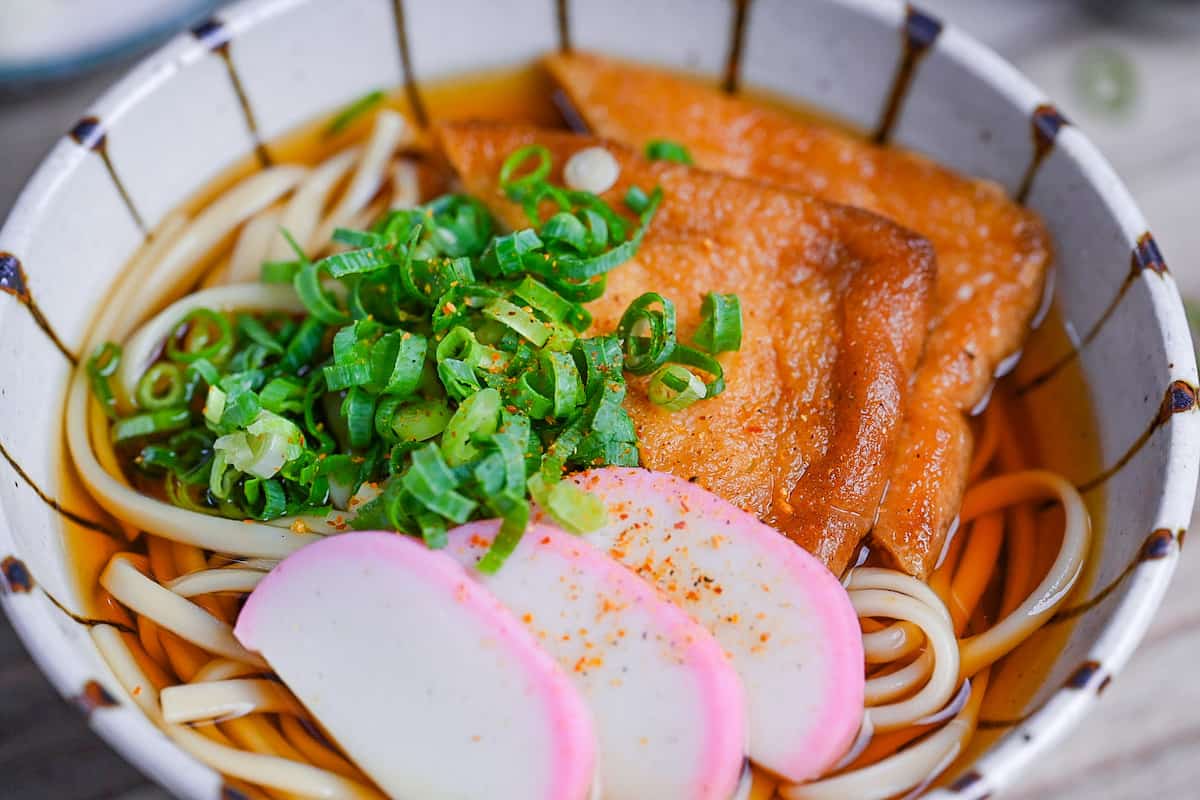
What is Kitsune Udon?
Kitsune udon is a comforting Japanese noodle soup topped with sweet-savory simmered aburaage (fried tofu). The name comes from folklore, where foxes (kitsune) are said to love fried tofu, and the golden slices echo their color. This dish is especially tied to Osaka’s rich udon culture, though it’s now enjoyed all across Japan.
Unlike heartier bowls such as pork udon or crisp-topped shrimp tempura udon, kitsune udon keeps things simple! Just chewy noodles, a simple udon noodle soup, and the signature seasoned aburaage.
Kitsune Udon Ingredients
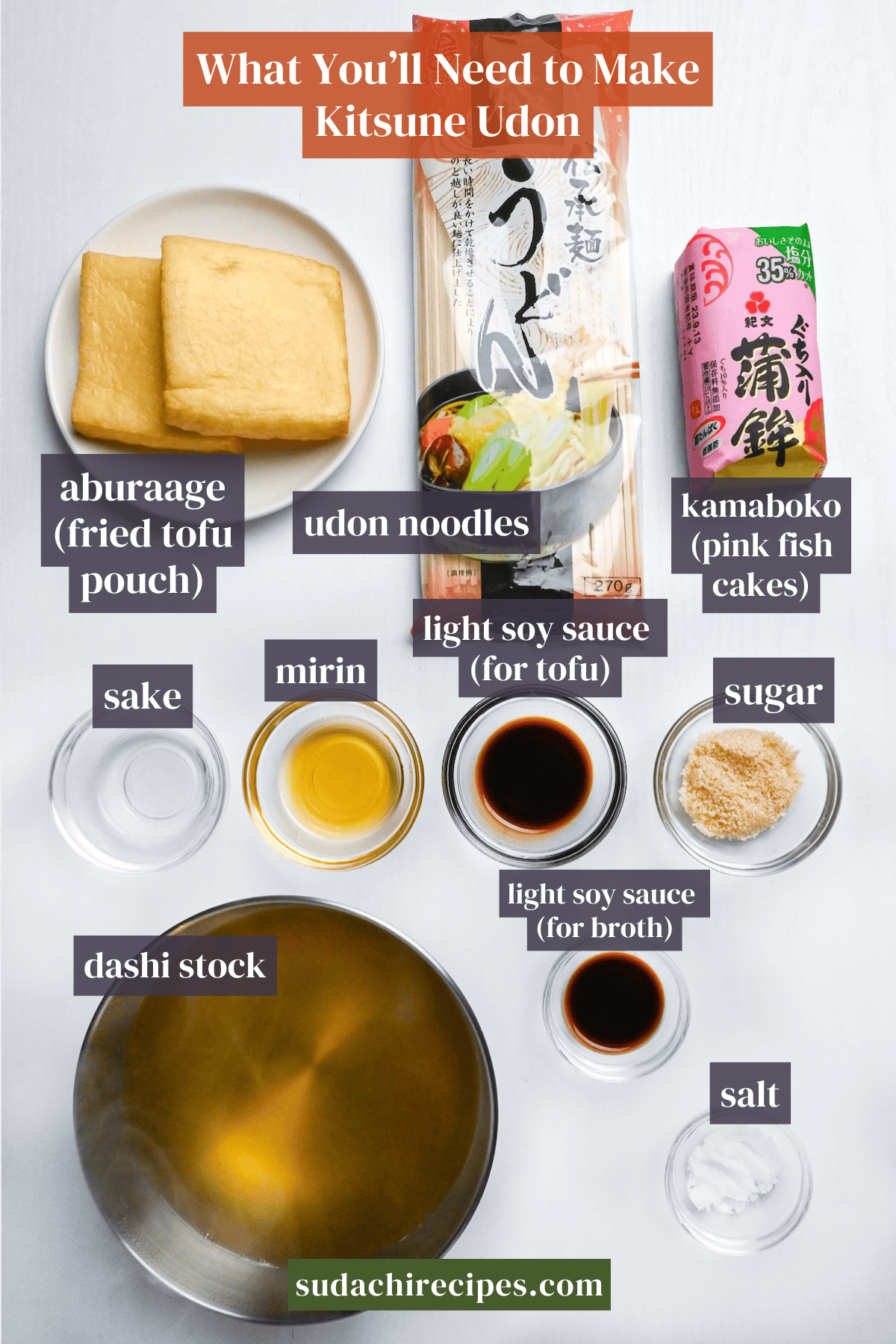
- Aburaage (fried tofu pouch): Look for them in the refrigerated or frozen section of Japanese and larger Asian markets. Often labelled as “abura age” or “fried bean curd”. Or you try using my homemade aburaage recipe!
- Japanese light soy sauce (usukuchi shoyu): It’s light in color (not in salt) so it seasons cleanly while keeping your broth & kitsune clear and golden. You can pick up bottles labeled “Usukuchi/Light Color Soy Sauce” at Japanese/Asian groceries, or order online.
- Udon noodles: Fresh, frozen, or dried udon all work beautifully here! Choose whatever fits your schedule and budget. I personally recommend frozen “sanuki” udon for ease and texture. Weekend warrior? Try making your own udon from scratch!
- Dashi stock (kombu-katsuobushi broth): From-scratch is my favorite, but I also recommend tea-bag-style dashi packets for similar flavor in minutes and they are easy to find at Japanese markets or online. In a pinch, instant dashi granules work with a slightly bolder, more “seasoned” aroma.
Substitutions & Variations
- For Plant-Based: Swap the bonito-kombu dashi for vegan dashi using dried shiitake mushrooms and kombu.
- Japanese Light Soy Sauce Alternatives: Regular Japanese soy sauce (koikuchi) is your best backup. In a pinch, Chinese light soy sauce works too.
- Noodle Swap: You can make this dish using soba noodles too (kitsune soba).
Have trouble finding Japanese ingredients? Check out my ultimate guide to Japanese ingredient substitutes!
How to Make My Kitsune Udon
If you prefer to watch the process in action, check out my YouTube video of this kitsune udon recipe!
i. Bring a medium pot of water to a full boil 100℃ (212°F), slide in the aburaage, and press it under the surface with a drop-lid (otoshibuta) or a parchment/foil round.
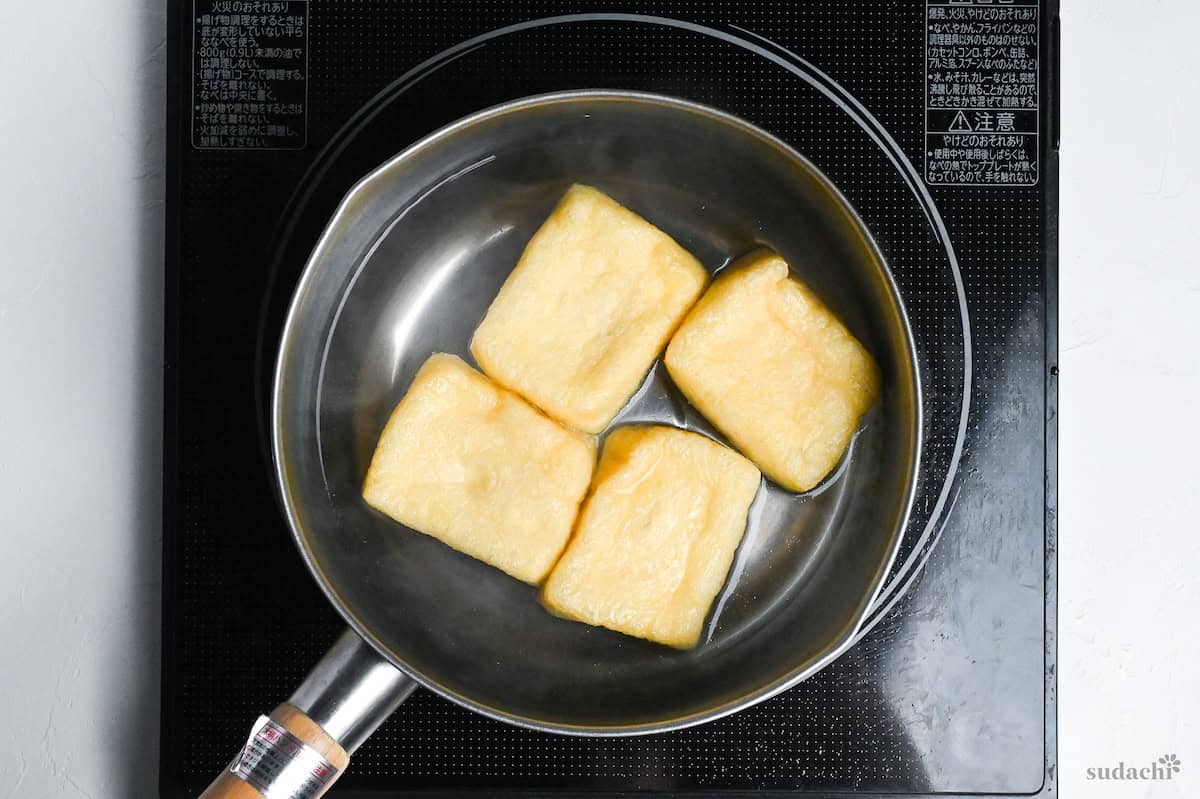
ii. Keep at a steady boil for about 3 minutes until the tofu smells less oily and looks saturated.
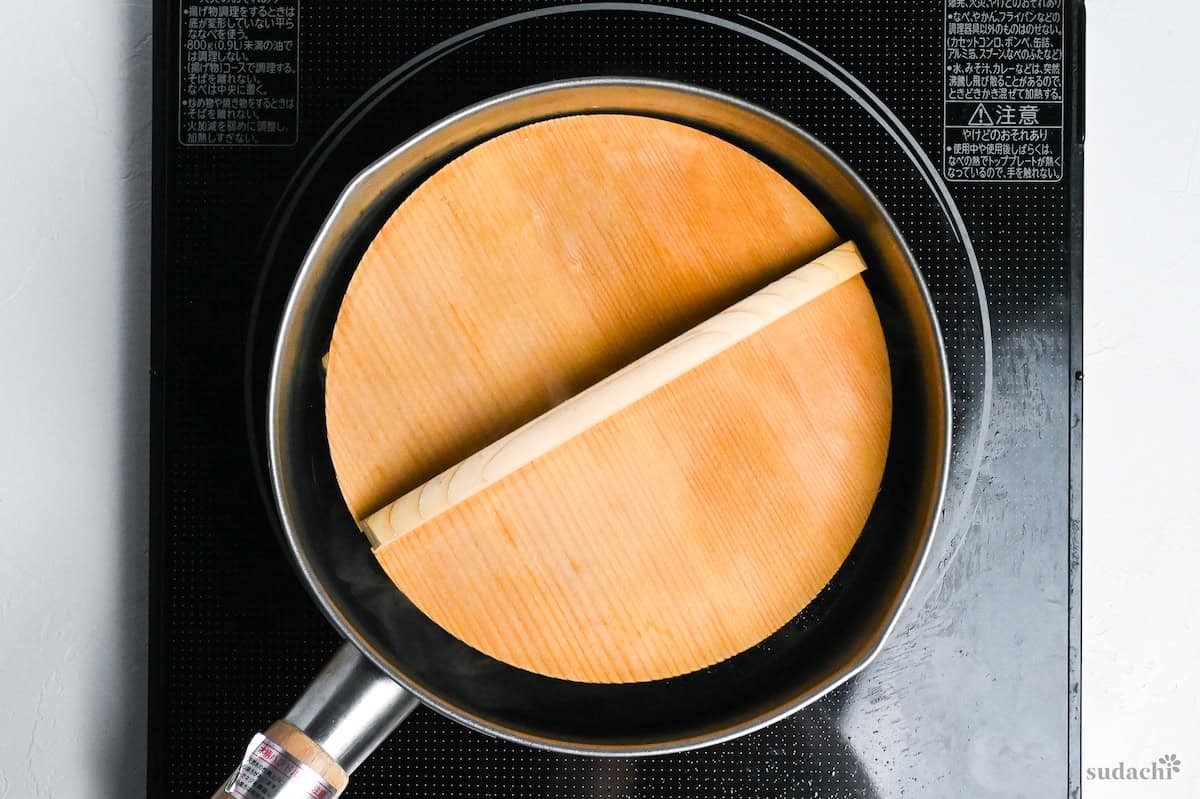
Aburaage holds seasoning better after “aburanuki” (oil removal), I recommend specifically so flavors soak in evenly. The drop-lid not only weighs them down but also limits agitation, so the pieces don’t tear while boiling.
iii. Transfer the aburaage to cold water to stop carryover heat, then gently squeeze between your palms to remove excess water without flattening.
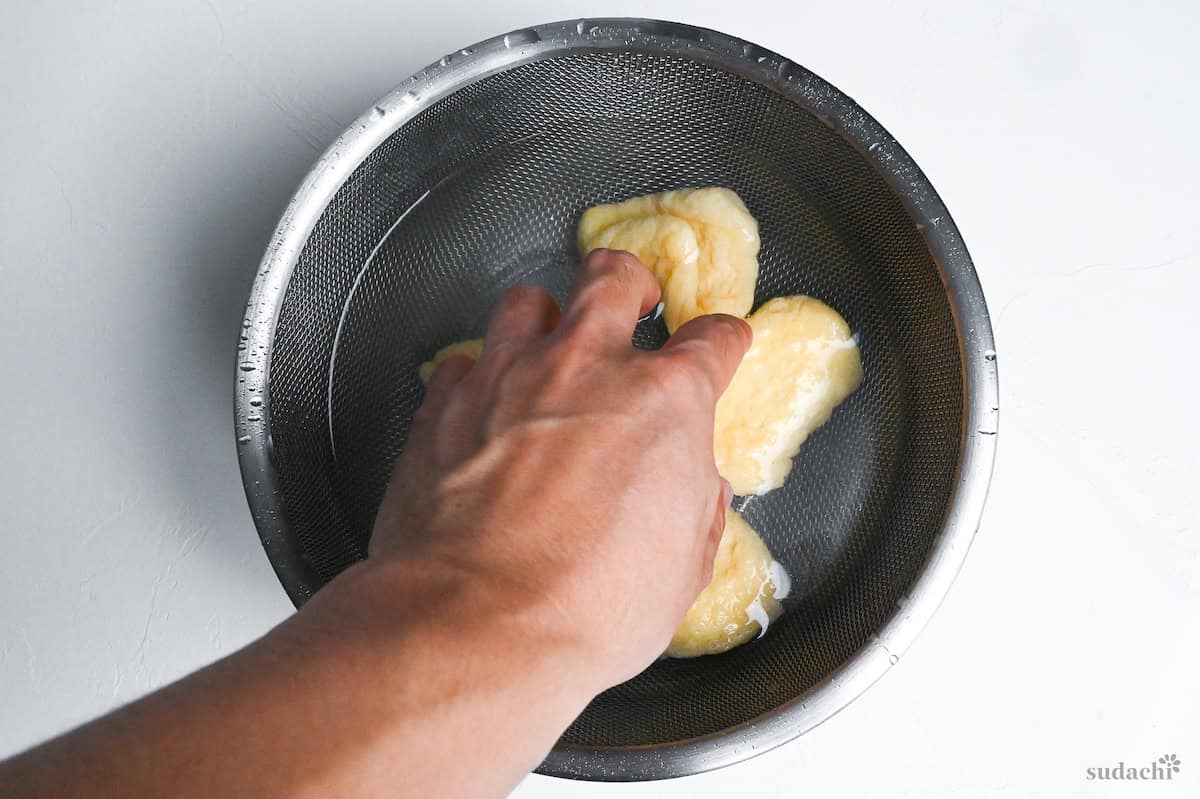
iv. You’re aiming for supple but not soggy. If it tears, you’re squeezing too hard, if a piece rips, stack it when simmering later so it cooks as one layer.
i. In a small saucepan, combine dashi stock with sugar, mirin, and sake. Heat over medium until steaming, 85-90℃ (185-194°F), and the sugar fully dissolves. If alcohol is a concern, keep it just below a boil for a few minutes to drive off harsher vapors.
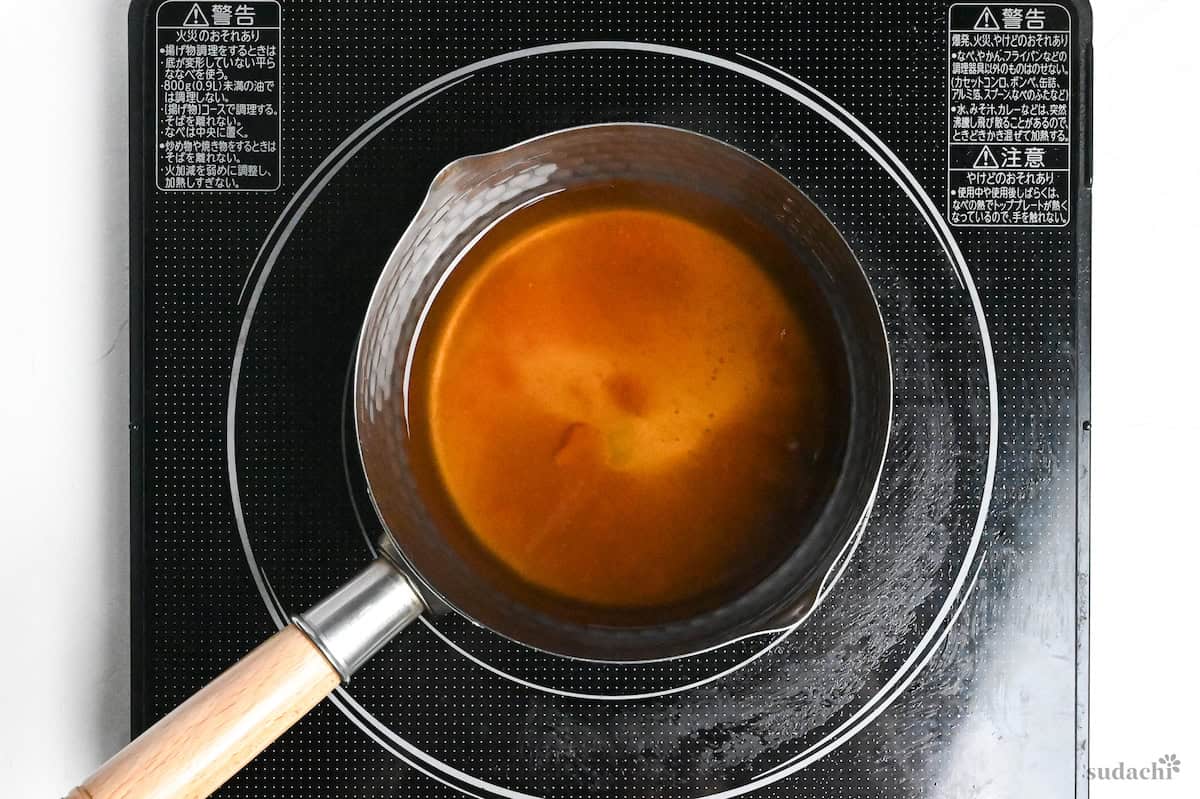
ii. Stir in soy sauce (usukuchi (light-colored) for a classic clear Kansai look).
Usukuchi is paler yet a touch saltier than koikuchi (about 18% vs. ~16% salt), so a small amount seasons cleanly without darkening the broth. One reason it took root in Kansai where light, dashi-forward flavors are prized. If you only have koikuchi, start with a little less to keep the color light.
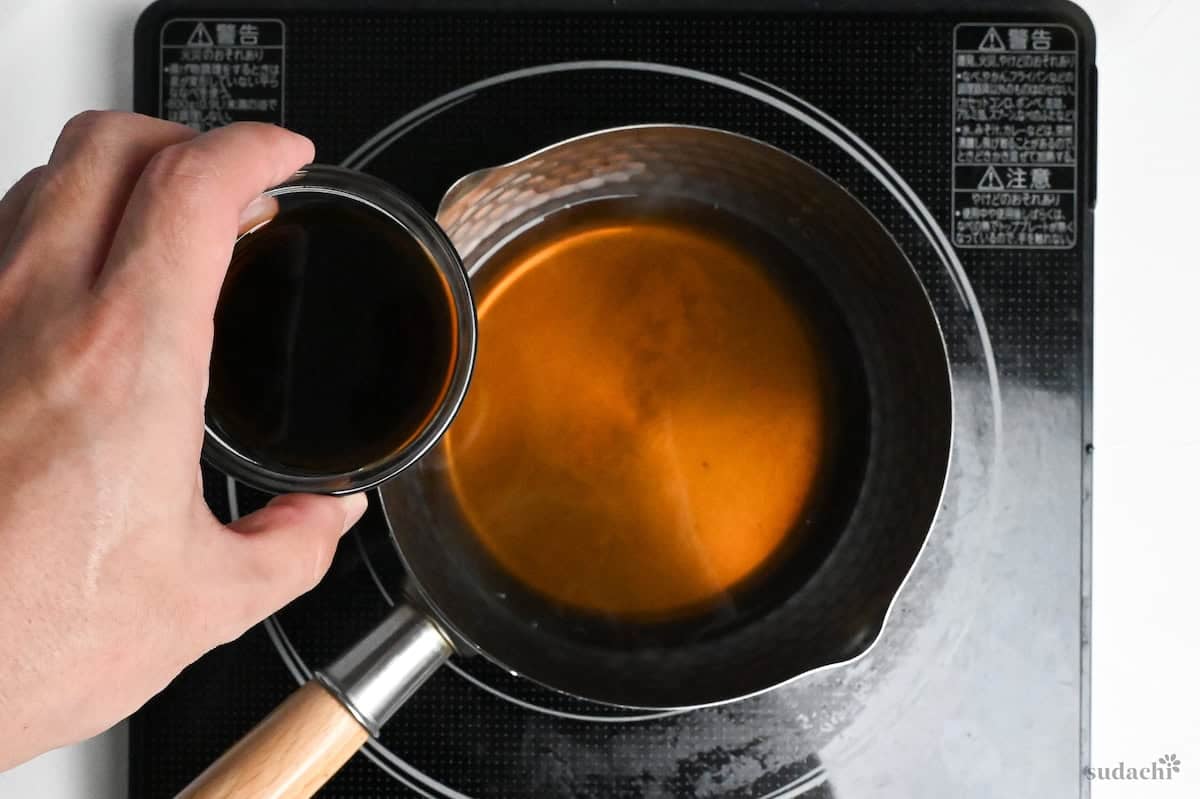
iii. Then nestle in the aburaage.
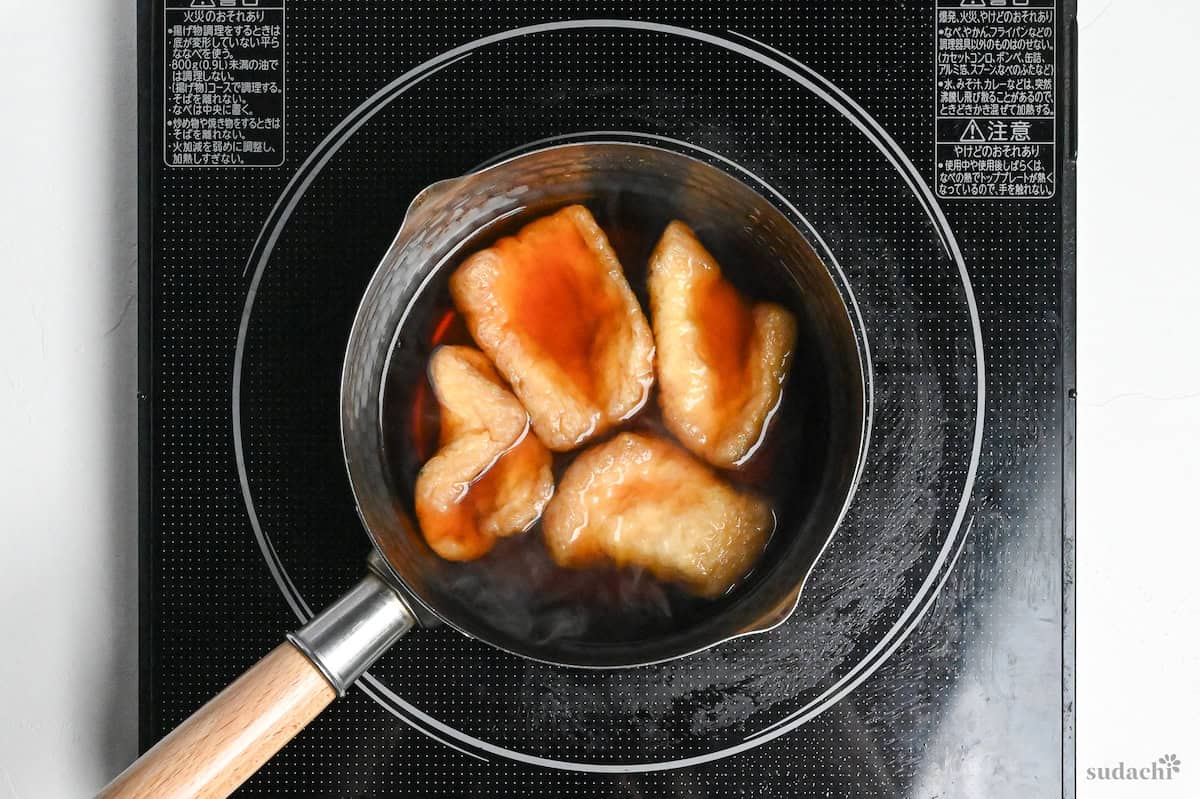
iv. Cover with a drop-lid and simmer gently at 85-95℃ (185-203°F) for about 10 minutes, until the liquid reduces to roughly one-third and the pieces look glossy and swollen.
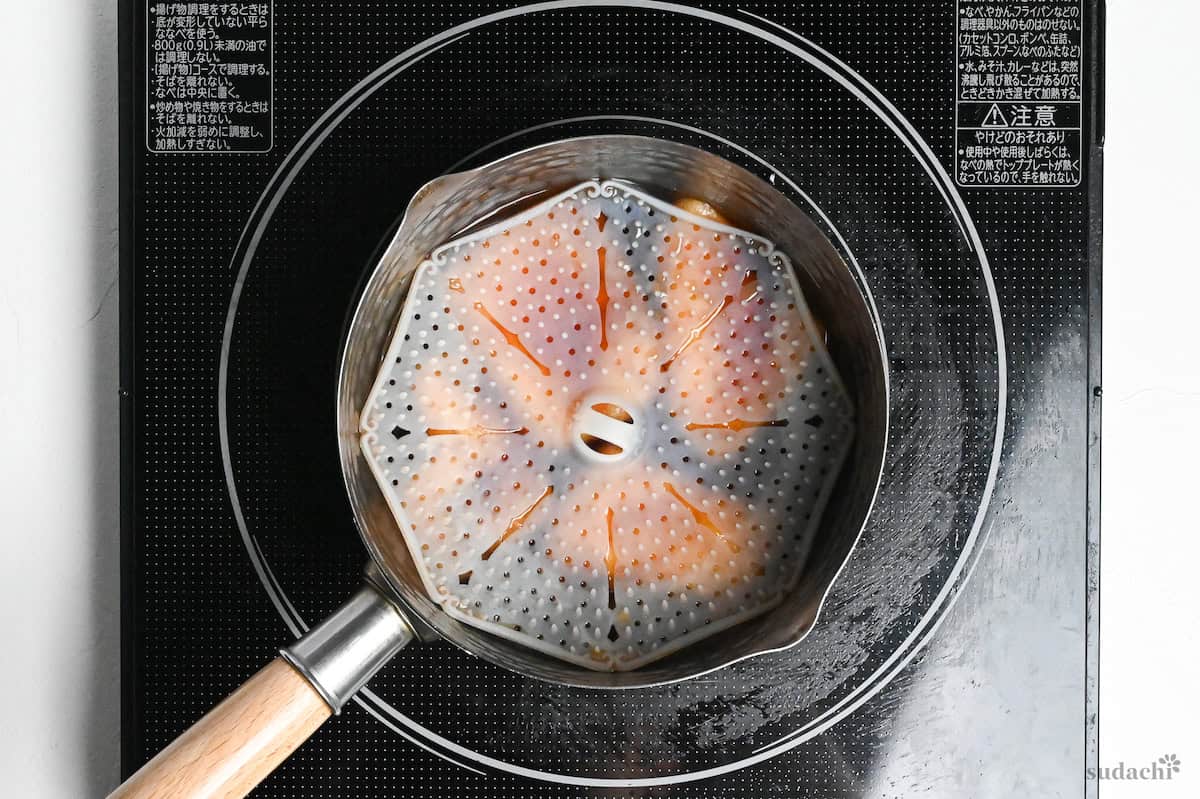
v. If bubbles get vigorous, lower the heat; hard boiling can toughen the surface.
i. Transfer the aburaage and its braising liquid to a shallow container, cool quickly, then refrigerate for at least 3 hours (overnight is even better).
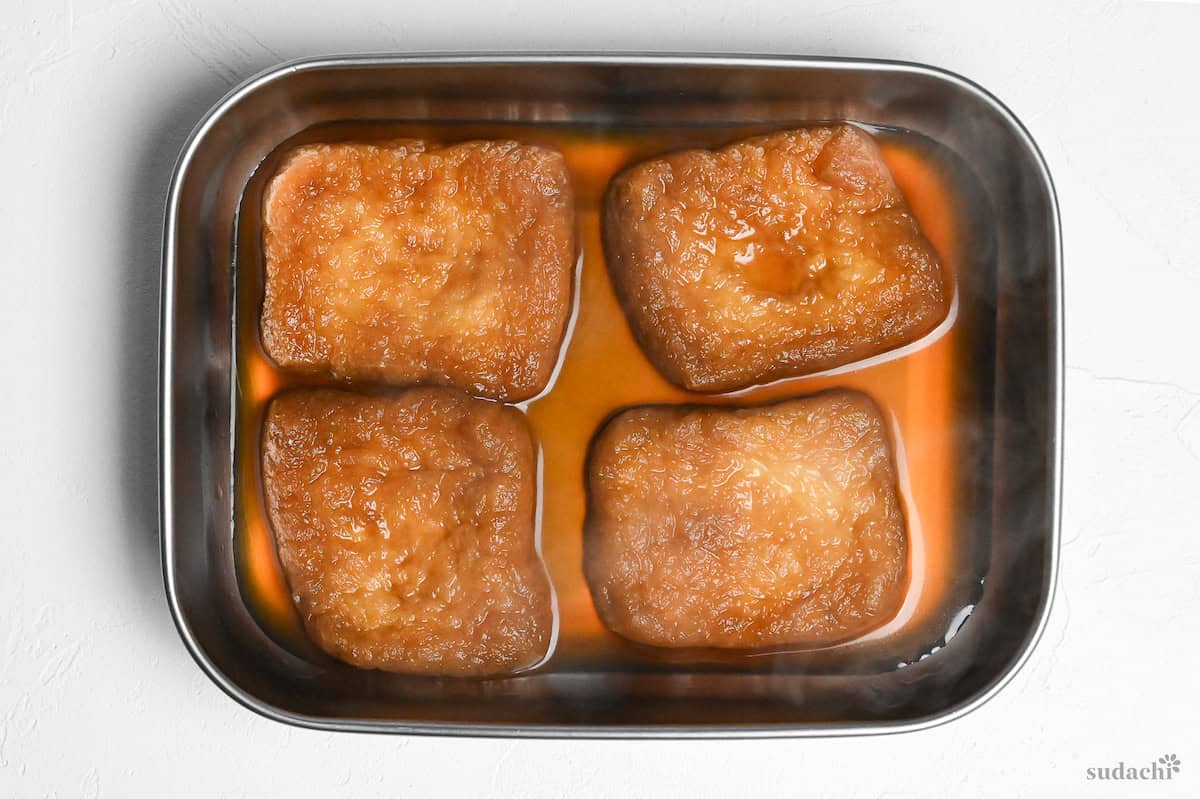
ii. Use within 24 hours for best texture and to avoid the flavor getting overly sweet and salty. Always refrigerate within 2 hours of cooking.
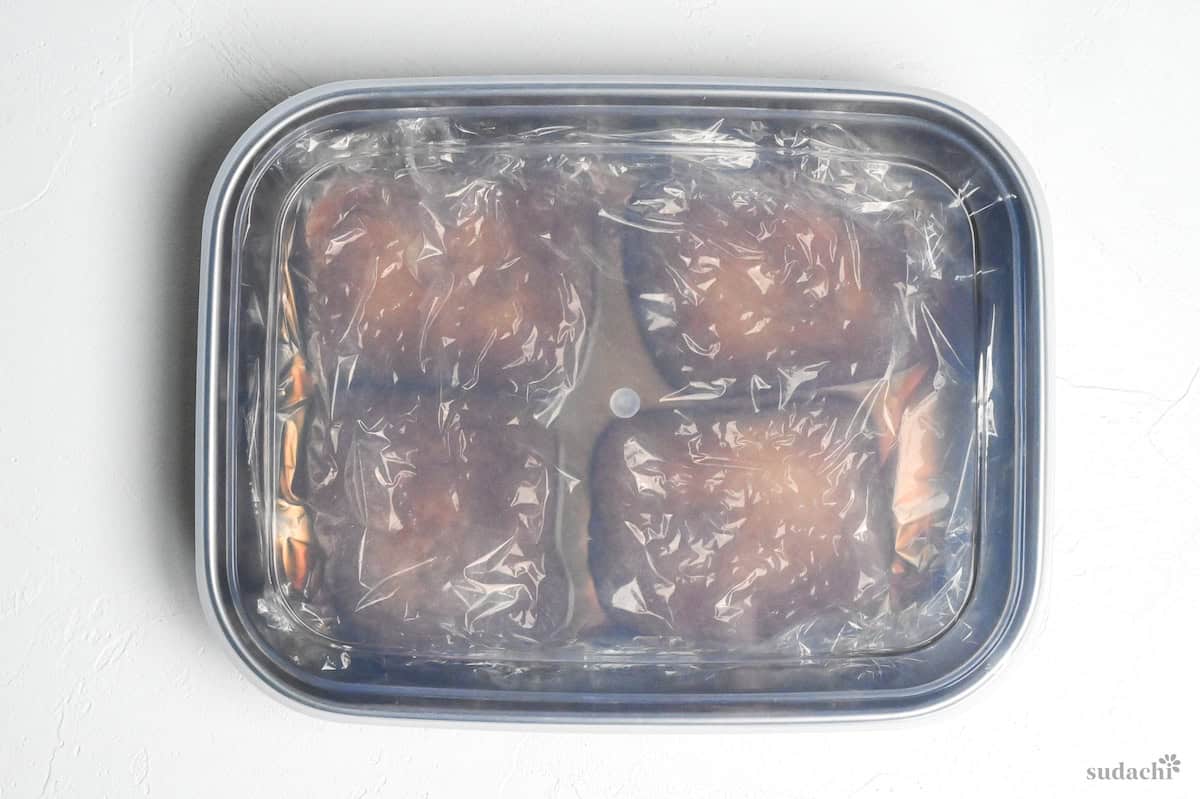
i. Bring a large pot of unsalted water to a rolling boil 100℃ (212°F) and cook the noodles per package until tender yet bouncy. If using dried noodles, expect longer than semi-fresh, frozen udon cooks fastest and is very consistent.
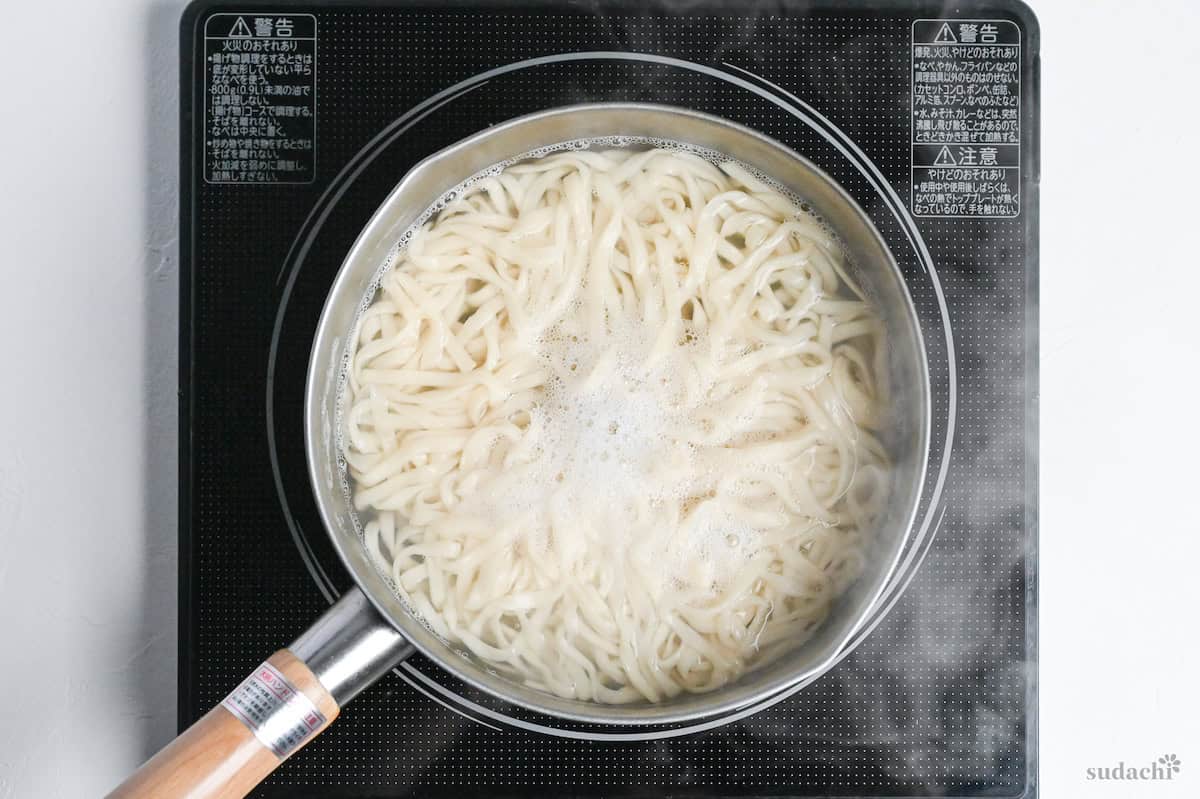
ii. Drain the noodles and rinse under cold running water to wash off surface starch and firm the bite. Rewarm briefly by dipping in hot water 75-85℃ (167-185°F) just before serving so they return to piping hot without getting gummy.
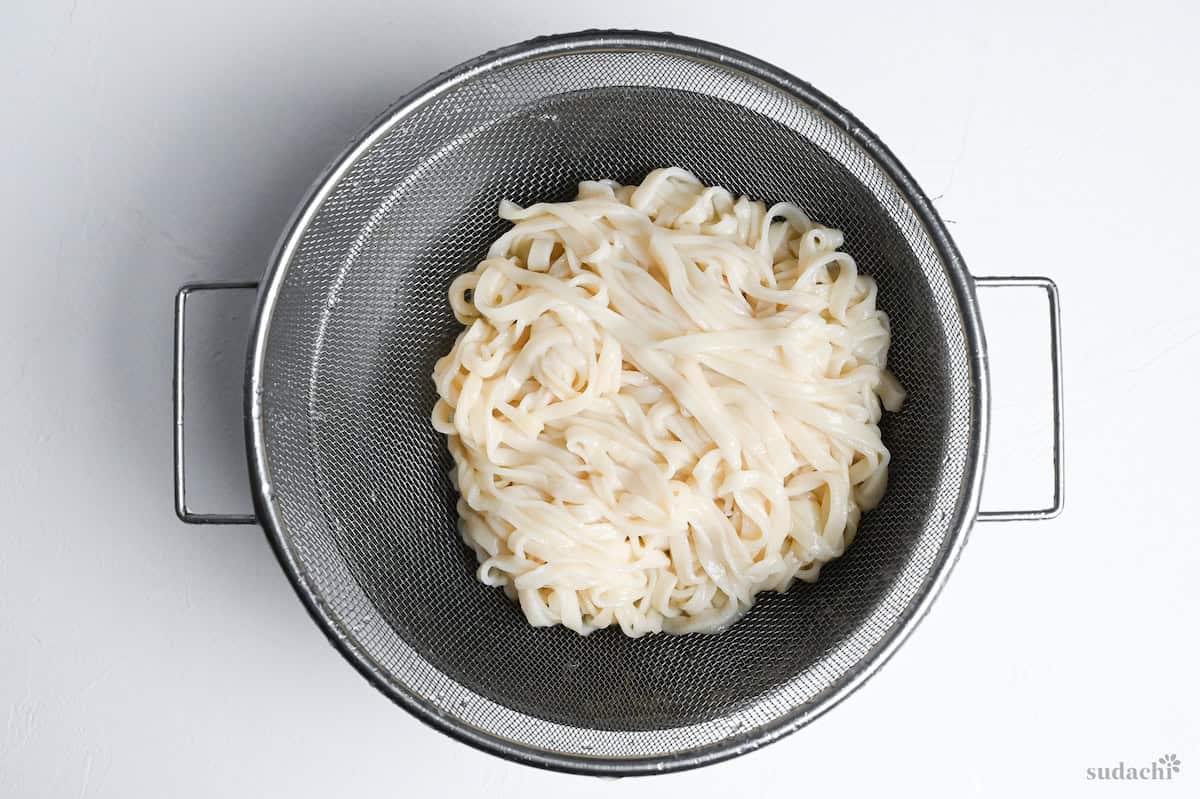
i. In a saucepan, bring dashi to a light boil 96-100℃ (205-212°F), season with soy sauce, mirin, and sake, then simmer 1-2 minutes and cut the heat.
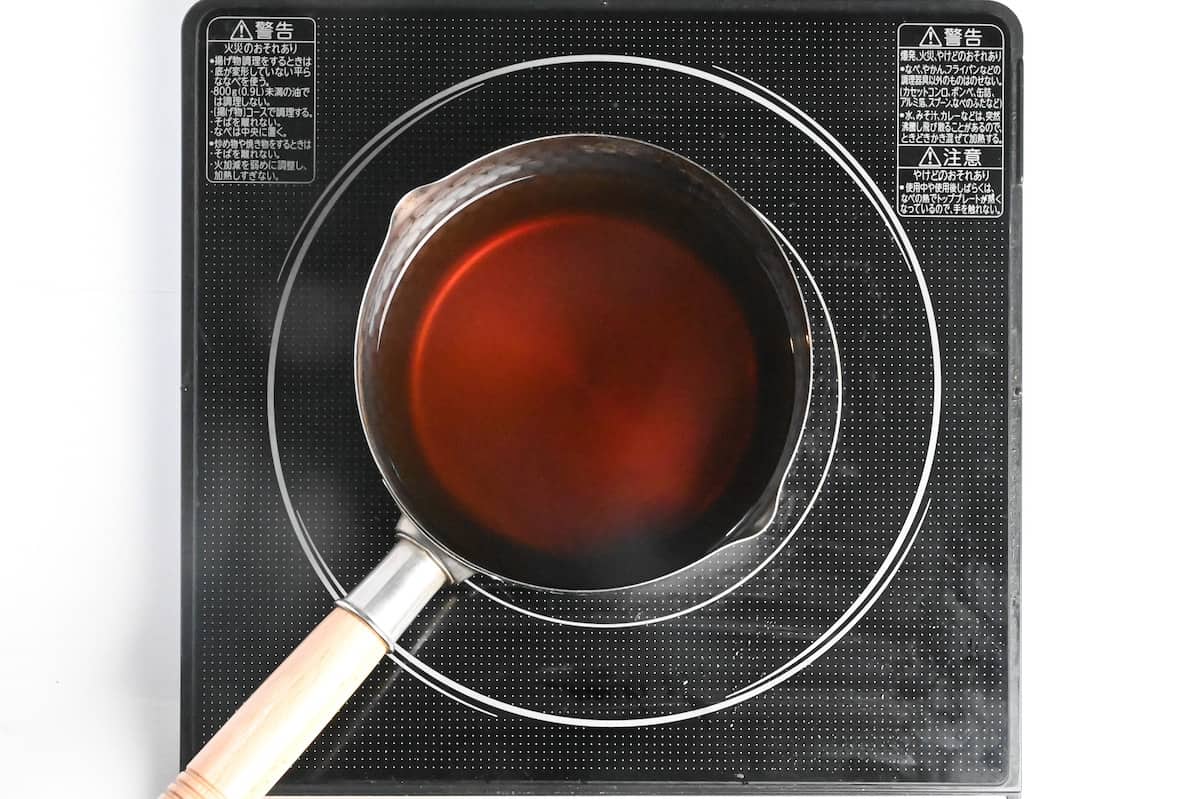
ii. The broth should taste bright and savory, not heavy. Adjust salt in small pinches.
i. Slice seasoned aburaage diagonally into triangles. Portion noodles into bowls, ladle on the hot broth, and top with the aburaage, kamaboko, and plenty of sliced green onions. Serve immediately while steaming.
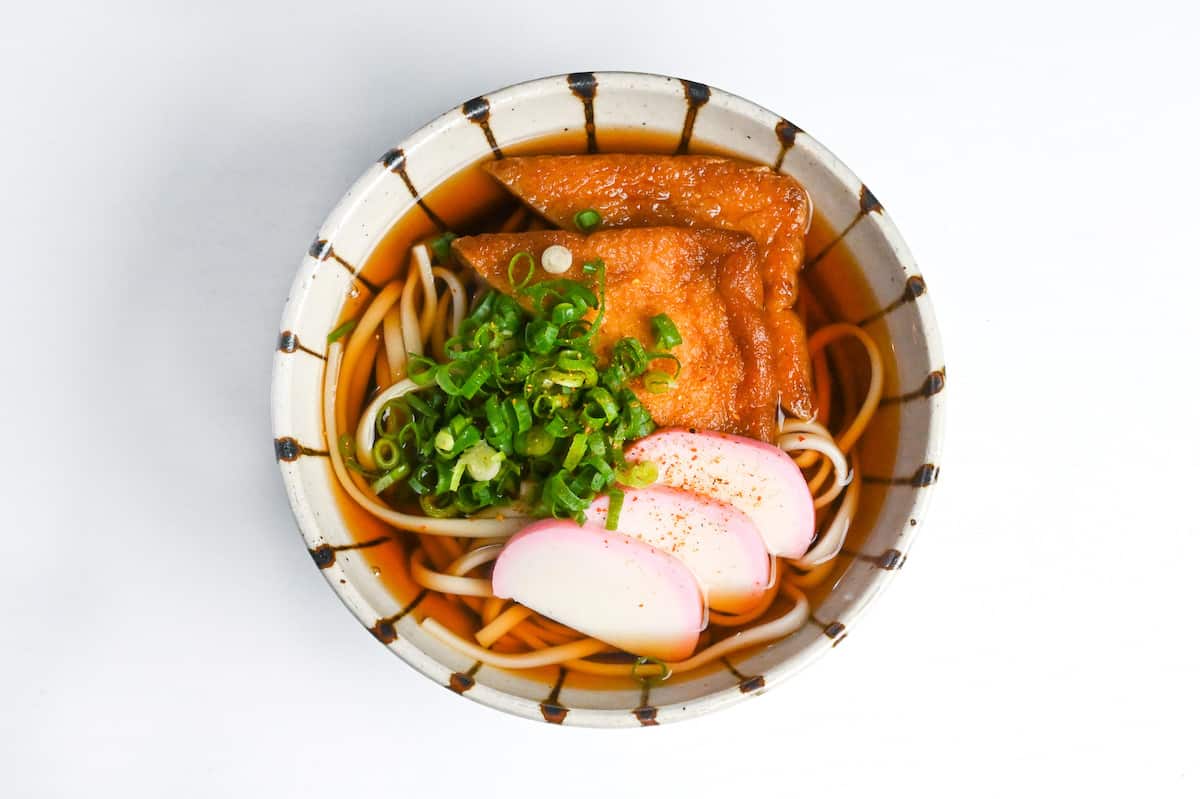

Essential Tips & Tricks
- Use a drop lid during blanching. Aburaage floats naturally, so you need that otoshibuta (or small plate) to keep it fully submerged for even oil removal.
- After blanching, wash with cold water and squeeze gently, being careful not to tear it.
- Don’t skip the cooling period. Room temperature aburaage absorbs flavors much better than hot.
- Marinated aburaage tastes best overnight but turns mushy and overly salty after 24 hours. Plan your timing accordingly.
- Assemble your bowls quickly while everything is hot.
With these simple tips in mind, you’re set for success every time you make authentic kitsune udon.
Storage & Meal Prep
Fridge: Seasoned aburaage: Airtight container with braising liquid, 1-2 days. Udon broth: Airtight container, 2-3 days. Cooked noodles: Not recommended.
Freezer: Seasoned aburaage: Wrap individually in plastic wrap, then store in freezer bags, 2-3 weeks. Udon broth: Freeze in ice cube trays or flat in freezer bags, up to 1 month. Cooked noodles: Not recommended.
Meal Prep: The best approach is component prep, Make your seasoned aburaage 1 day ahead and broth up to 2-3 days in advance, then cook fresh noodles when ready to serve.
What to Serve With This Recipe
- Hiyayakko (Cold Tofu)
- Cucumber Sunomono (Vinegar Salad)
- Chikuwa Isobe Age
- Dashimaki Tamago (Sweet Rolled Omelet)
Kitsune Udon Q&A
The name comes from Japanese folklore where foxes are messengers of Inari, the Shinto deity of rice and prosperity. According to traditional belief, foxes love aburaage (fried tofu), so offering it at Inari shrines became common practice during the Edo period. When sweet-simmered aburaage was added to udon, it naturally earned the nickname “kitsune udon.” Interestingly, regional naming varies. In Kansai, udon with aburaage is “kitsune” while soba with aburaage is “tanuki,” but in Tokyo, both noodle types with aburaage are simply called “kitsune.”
Insufficient oil removal is the culprit. Don’t skip the blanching step or try shortcuts like microwaving. You need a full rolling boil with plenty of water.
This is one of the most common mistakes. You likely skipped the oil-blanching step or didn’t simmer long enough. Always blanch aburaage in boiling water to remove the oil barrier, then use a drop lid during simmering to keep it submerged in the braising liquid. Longer marination can also aid better flavor absorption but over-marinating can make it overly salty (I usually recommend 24 hours).
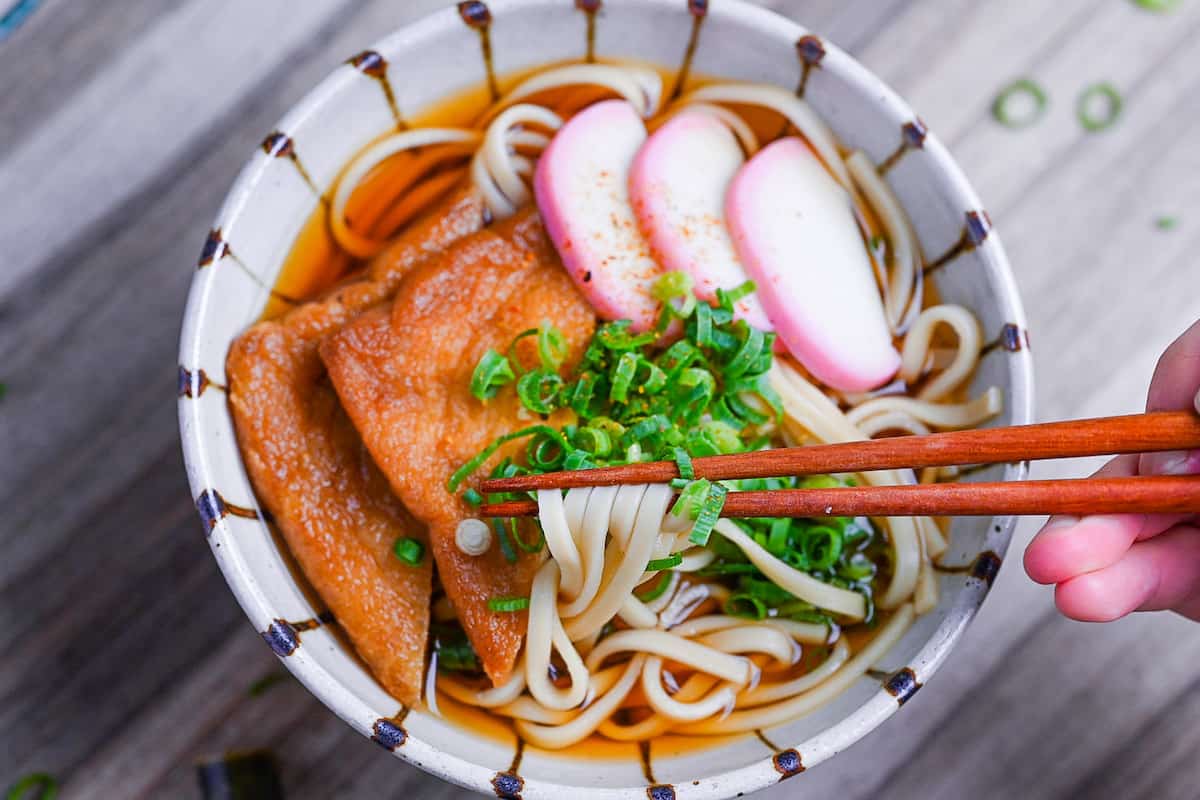
More Authentic Udon Recipes
Hungry for more? Dive into my comprehensive collection of udon noodle recipes to discover your next comfort food obsession!
Did You Try This Recipe?
I would love to hear your thoughts!
💬 Leave a review and ⭐️ rating in the comments below. 📷 I also love to see your photos – submit them here!
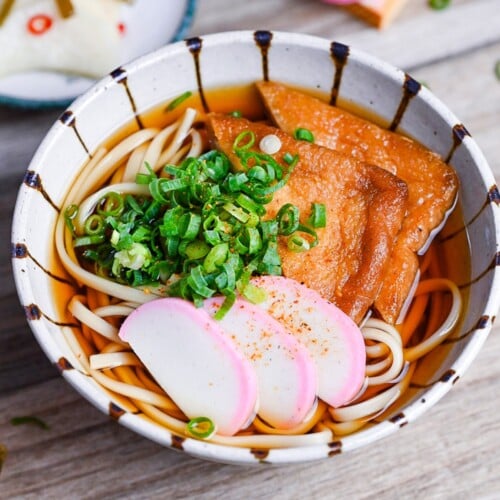
Authentic Kitsune Udon Noodle Soup
Ingredients
Kitsune
- 4 pieces fried tofu pouch (aburaage)
- water for blanching, enough to fully submerge aburaage
- ½ tsp salt
- 150 ml dashi stock
- 2 tbsp mirin hon-mirin best
- 2 tbsp sugar
- 1 tbsp sake
- 2 tbsp Japanese light soy sauce (usukuchi shoyu) or regular soy sauce
Udon soup
- 1000 ml dashi stock make it plant-based by using a shiitake and kombu awase dashi
- 4 tbsp Japanese light soy sauce (usukuchi shoyu) or regular soy sauce
- 2 tbsp mirin
- ½ tsp salt
Other elements
- 4 portions udon noodles thick or medium-thick preferred for texture
- finely chopped green onions
- 12 slices kamaboko fish cake omit for plant-based diets
My recommended brands of ingredients and seasonings can be found in my Japanese pantry guide.
Can’t find certain Japanese ingredients? See my substitution guide here.
Instructions
Making the kitsune aburaage
- Fill a pot with enough water to submerge the aburaage and bring it to a boil. Add ½ tsp salt and 4 pieces fried tofu pouch (aburaage) to the pot.

- Place a drop lid on top to help keep them submerged and boil for 3 minutes.

- Remove the aburaage from the pot and wash them in cold water, and squeeze out the excess liquid.

- Take another pan and add 150 ml dashi stock, 2 tbsp sugar, 1 tbsp sake, 2 tbsp mirin and mix. Heat on medium.

- Once the sugar is dissolved, add 2 tbsp Japanese light soy sauce (usukuchi shoyu).

- Bring the liquid to almost boiling, then turn the heat down to simmer and add the aburaage.

- Place the drop lid on the top and simmer for 15 minutes or until the liquid is reduced by one third.

- Place the aburaage into a container and leave them to cool. Once cooled, place in the fridge for at least a few hours, preferably overnight.

Noodles and Broth
- Boil 4 portions udon noodles according to the instructions on the packaging. Once cooked, drain and rinse with hot water to remove excess starch.

- Pour 1000 ml dashi stock into the pan and add 4 tbsp Japanese light soy sauce (usukuchi shoyu), 2 tbsp mirin and turn the heat on high. Boil for 1-2 minutes, turn off the heat and add ½ tsp salt.

- Cut the seasoned tofu pouches into triangles by cutting in half diagonally.

- Divide the udon into serving bowls, pour the broth over the top and garnish with the seasoned tofu pouches, kamaboko fish cakes and chopped green onion.

- Enjoy!
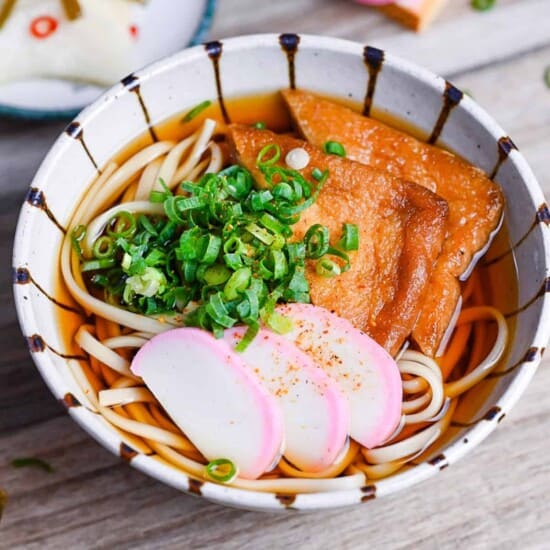




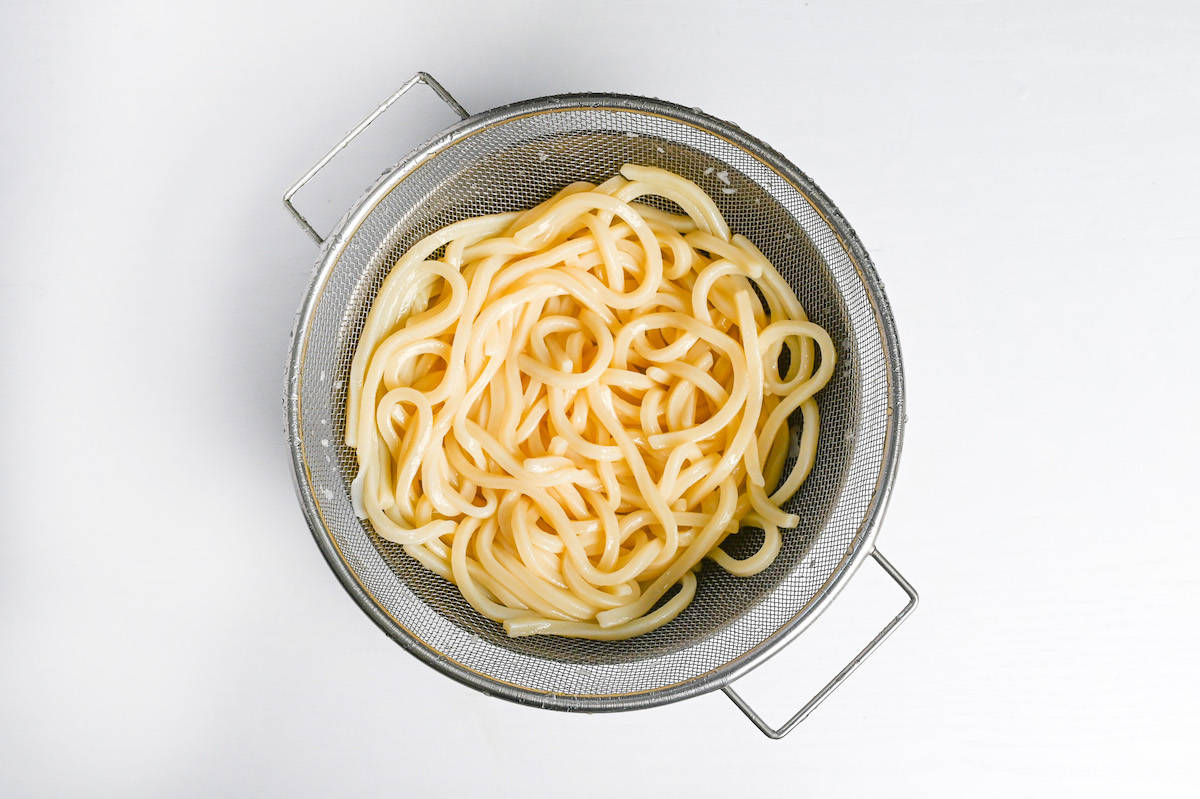
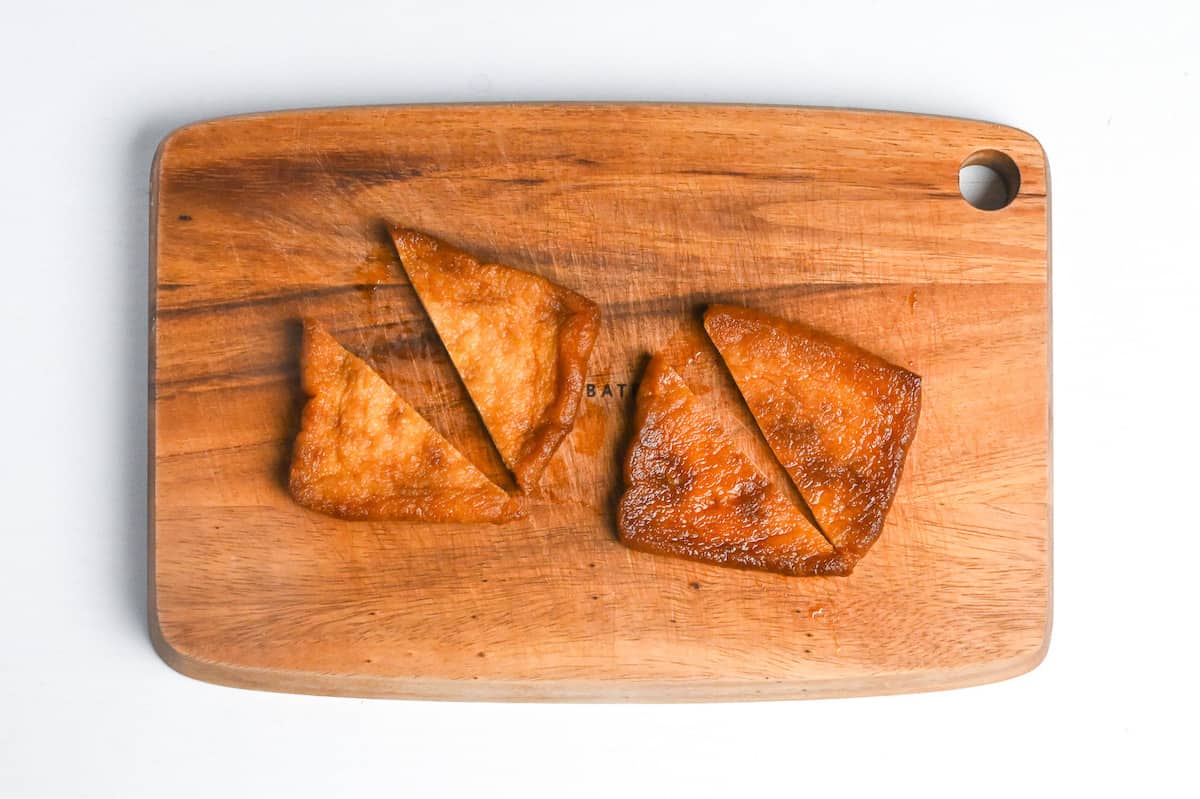
Leave a rating and a comment